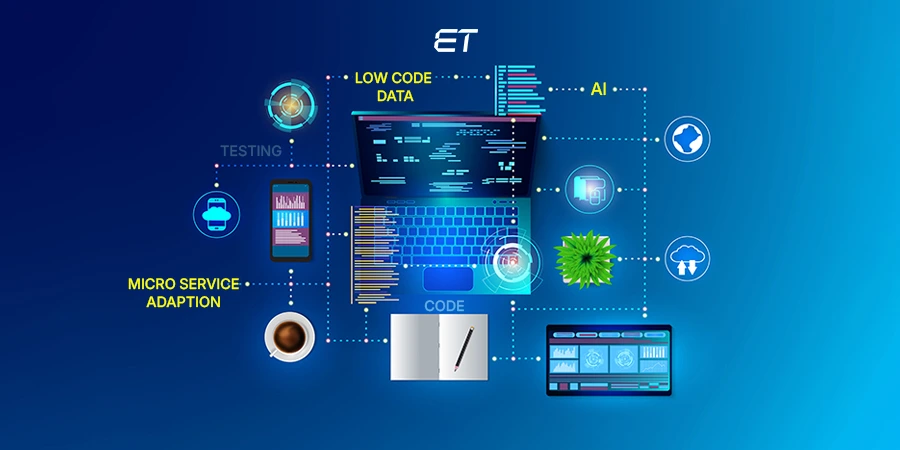
What Is Vibe Coding and Why it’s Fueling the Fastest Tech Teams
- Vibe coding is an AI-assisted development mindset focused on speed, flow, and reduced friction.
- Developers co-create with tools like GitHub Copilot and Replit Ghostwriter, shaping code through natural prompts.
- This coding approach enables lean teams to ship faster, collaborate asynchronously, and minimize process-heavy overhead.
- Hiring vibe-aligned developers ensures you build smarter and stay ahead with AI-native software development.
Do you ever wonder how your competitor keeps launching apps like they’re playing golf? And then there’s you, who sips fifty cups of coffee every day just to clear bug backlogs. The difference? Vibe coding.
This term isn’t a marketing gimmick. In fact, it’s a great tactic to stay lean. Y Combinator CEO Garry Tan says lean teams of 10 can do the work of 50 – 100 engineers, all due to the ‘vibe.’
So, what is vibe coding? Simply put, it’s a mindset. It’s when engineers guide an AI assistant, shaping features in natural language, debugging collaboratively, and trusting their flow over rigid processes. The overall concept is interesting, just like any new episode of ‘The Last of Us.’
In this post, you’ll explore vibe coding meaning and dig into how it works, all with your CTO vision. So, read on for a practical playbook that’ll have you hiring developers who code smarter.
Are you tired of slow development cycles? Let’s fix that with AI.
What is Vibe Coding?
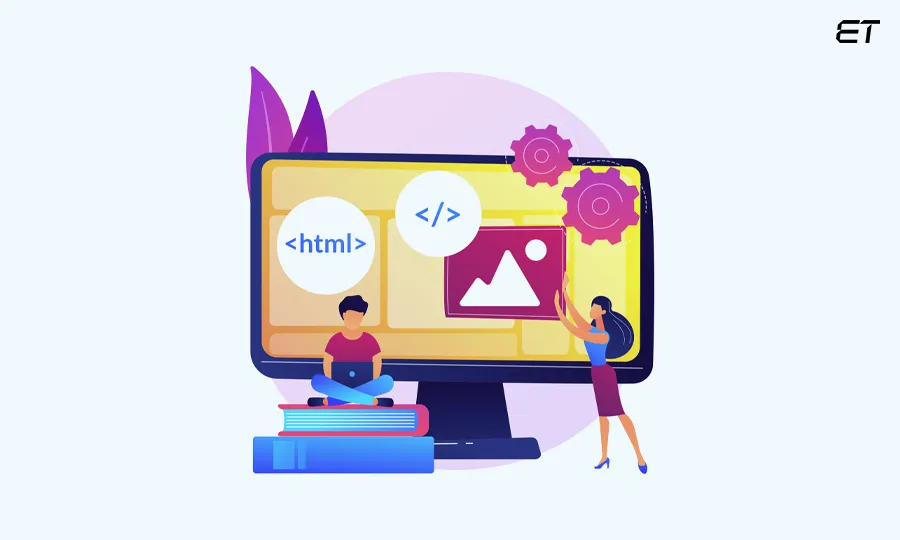
Vibe coding is a development approach where engineers work in sync with each other and AI tools to build software faster.
Yes, the concept is easy to understand.
This type of coding:
- Emphasizes real-time collaboration
- Shared context
- The natural flow of execution over rigid processes
- Excessive documentation
Initially, making sense of vibe coding meaning can feel a tad complex. But we’re sure this analogy can make things clear.
You know Notepad and Google Docs.
- Traditional coding is like writing in Notepad. There is no formatting and no AI suggestions; you have to do everything manually.
- Vibe coding is like writing in Google Docs. You get smart suggestions. Grammarly can rectify errors, and someone can else jump in to collaborate.
We hope you get this example simplifies the concept.
Key Characteristics of Vibe Coding
Today, Slack might be your vibe. It’s less formal than email and faster for team collaboration. The same’s true for vibe coding.
- Natural language inputs drive code generation.
- Developers use tools like GitHub Copilot to describe what they want.
- There’s minimal documentation and stronger internal alignment.
- Teams rely on shared patterns and mental models instead of lengthy manuals.
- Developers review, revise, and build together, either live or asynchronously.
In vibe coding, the focus is on reducing friction and shorter development loops.
Andrej Karpathy captures this shift wonderfully. Code is becoming a conversation between humans and machines. Vibe coding is that conversation in motion.

Why Vibe Coding is Gaining Traction?
You are aware of the concept by now. Vibe coding uses AI as an assistant to help developers collaborate, code smarter, and ship software faster.
But, why should you think about it now? Here are the compelling reasons.
1. The Power of AI
76% of developers are now using or planning to use AI coding tools and they report tasks completing faster on average.
What’s more?
GitHub Copilot, the popular AI-powered programmer, helps users complete tasks 56% faster, with a 7% higher success rate.
If you liked vibe coding, you’d love smarter tech spaces.
2. There is a Shift in Developer Roles
As AI takes over routine tasks, engineers become cognitive architects. Today, they focus on design, quality, and prompts, not syntax.
70% of developers say AI coding tools offer an advantage at work. Additionally, 41% of developers believe that AI helps prevent burnout. This aspect can persuade you to choose vibe coding.
3. Workflow Optimization Becomes Cultural
With the rise of remote and asynchronous work over traditional office models, Vibe Coding replaces heavy documentation with real-time collaboration.
This facet allows velocity without sacrificing alignment.
4. Enterprise Validation is Vital
Companies like Visa, Reddit, and DoorDash now list experience with AI code-gen tools as a must-have on job postings.
However, overuse of AI may introduce security risks or technical debt without proper oversight.
So, why is vibe coding a new attraction?
- Teams ship features faster.
- Smaller teams now have the output of much larger ones.
- Developers stay sharp and less burned out.
- Top talent seeks flow-driven environments.
The only risk? New processes require governance. So, once you stay clear, the benefits of vibe coding become more achievable.
Building at scale? Our enterprise development teams get it done right.
How Vibe Coding Works
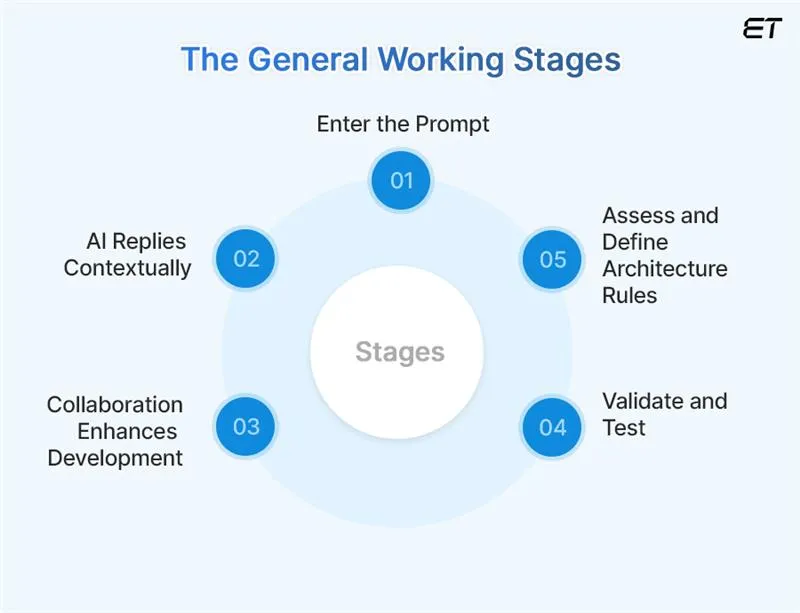
Vibe coding uses AI to augment the software development workflow.
Essentially, you transition from writing code line by line to shaping intent, collaborating in a flow, and allowing the system to handle repetitive tasks.
Here’s how the process works.
1. Prompt-Driven Coding with AI Copilots
Developers no longer start from scratch. Instead, they:
- Write natural language prompts to describe functionality.
- Use inline tools like GitHub Copilot, Cody, or Replit Ghostwriter.
- Generate code suggestions for functions, components, test cases, and more.
Example:
Prompt: Create a Node.js Express route for POST /login with JWT auth.
Output: Copilot generates the route, middleware, and error-handling logic within seconds.
This tactic doesn’t eliminate manual coding. It just helps accelerate the process. Developers still review, modify, and optimize the generated code.
Planning an AI App? Start here before you build anything.
2. Embedded AI Inside IDEs and Codebases
The development environment becomes AI-native:
- Suggestions appear contextually in VS Code, JetBrains, or browser-based IDEs.
- AI tools learn from the project’s codebase, naming conventions, and architecture.
- They adapt to how the team writes, not just generic code snippets.
Result: Developers don’t break the flow. They write, review, and adapt in one environment.
3. Async Collaboration and Shared Mental Models
Vibe coding thrives in modern, remote-first setups:
- Teams use pair programming tools (e.g., Tuple, Live Share)
- They co-edit or review code in real-time, reducing long PR cycles.
- You embed shared context in prompts, commit messages, and structured naming.
All in all, this approach to vibe coding reduces the need for excessive documentation and endless stand-ups.
4. Continuous Validation with Integrated Tooling
Do you think Vibe coding is all about AI-assisted programming?
If the answer is yes, think again.
The other half of this process is testing and validation:
- Developers can generate auto-suggested tests written via prompts (E.g., Write unit tests for this class)
- Linting, formatting, and error checking run continuously in the background.
- Git hooks, CI/CD pipelines, and review bots catch issues early.
Overall, teams don’t wait for QA bottlenecks to be resolved. They ship confidently, iteratively, and with faster cycles.
5. Architecture and Planning is Crucial
Vibe coding doesn’t remove the need for good design. It actually demands more clarity:
- Developers must learn to structure prompts properly.
- Systems must be modular, well-named, and easy to interpret by both humans and AI.
- The team sets architectural guardrails, and AI works within them.
In essence vibe coding changes the role of the developer from code generator to code orchestrator. You still need technical skills, but now tool fluency, prompt engineering, and strong communication have become ever more vital.
Want ChatGPT inside your app? Here’s how to do it.
Best Vibe Coding Tools for High-Performance Teams
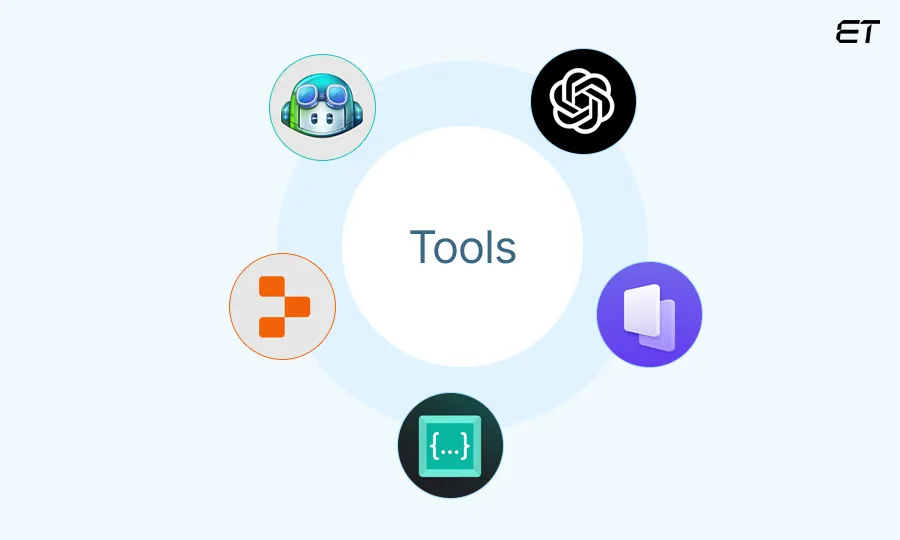
Now that we’ve covered how vibe coding works, let’s look at the tools that make it possible in real-world environments.
What Is Vibe Coding and why it’s Fueling the Fastest Tech Teams
| Tool | Primary Use | Best For | Why It’s Great for Vibe Coding |
| GitHub Copilot | AI code generation | All developers | Prompt-driven coding, IDE-native integration |
| Replit Ghostwriter | Full-stack cloud dev environment | Fast prototyping and small teams | AI + environment + deployment in one place |
| Codeium | Free Copilot Alternative | Cost-conscious teams | Lightweight, fast, context-aware code suggestions |
| Tuple | Pair programming and team coding | Remote engineering teams | High-fidelity, low-latency remote collaboration |
| Code Interpreter (OpenAI) | AI debugging, code analysis | Senior engineers and leads | Understands code, visualizes output, accelerates testing |
If you want to know more, explore the tool in depth below.
1. GitHub Copilot
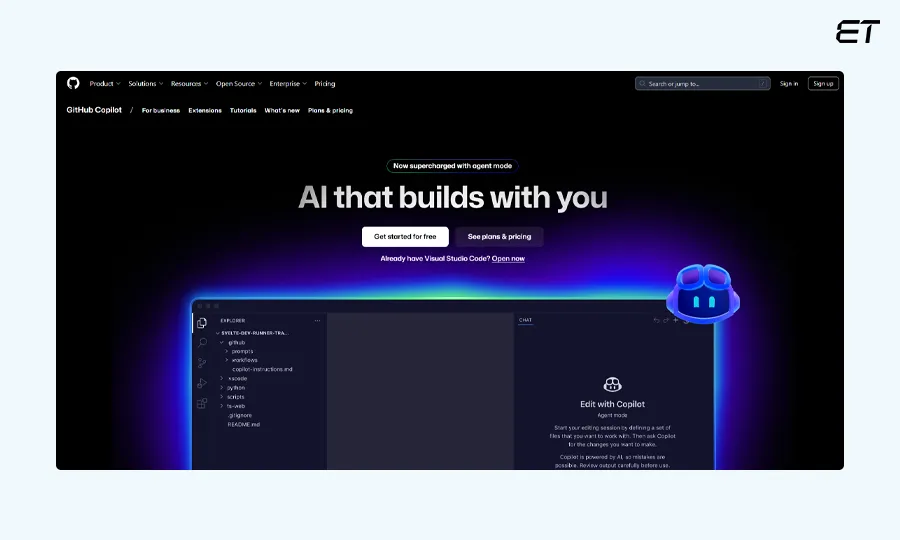
This tool is an AI coding assistant built by GitHub and OpenAI. It integrates with VS Code and other IDEs, providing real-time code suggestions, generating functions, and assisting with documentation.
GitHub Copilot removes the grunt work. Instead of writing everything manually, you get instant scaffolding and move forward without breaking flow. It’s intuitive, highly contextual, and improves over time as it learns the project’s patterns.
| Pros | Cons |
| Seamlessly integrates with major IDEs like VS Code | May suggest insecure/outdated code if not reviewed |
| Improves over time with project context | Doesn’t always handle complex logic accurately |
| Excellent for reducing boilerplate and setup time | Performance drops in lesser-known languages |
| Enterprise-grade controls (Copilot for Business) | Requires GitHub ecosystem for optimal use |
What’s good for you?
This vibe coding tool is enterprise-ready. It includes admin controls, policy settings, and telemetry options.
GitHub Copilot or ChatGPT? See which one fits your stack.
2. Replit Ghostwriter

This vibe coding tool is a browser-based cloud IDE with built-in AI assistance. Ghostwriter helps you write code, explain bugs, and generate functions within the Replit environment.
Notably, you don’t need setup or switching tools. You can prompt, write, run, and deploy in a single place. It’s the fastest route from idea to live app especially for lean teams or prototyping.
| Pros | Cons |
| All-in-one environment: write, test, deploy | Not ideal for enterprise-scale monorepos |
| AI suggestions feel fast and natural | Limited version control features vs Git |
| Great for MVPs, internal tools, and learning | Less customizable than local IDEs |
| Works on any browser | Still maturing in debugging and deep code reasoning |
What’s good for you?
Replit Ghostwriter is worth considering for internal tools and early-stage startups.
3. Codeium (Windsurf)

The next vibe coding tool is free, fast, and flexible. It works across several IDEs. Codeium (now Windsurf) offers Copilot-like functionality without the subscription cost, including docstring generation, test scaffolding, and contextual suggestions.
It provides smaller or cost-conscious teams with access to AI-powered workflows without vendor lock-in. Notably, Codeium is lightweight, accurate, and a strong entry point for those exploring the vibe coding workflow.
| Pros | Cons |
| Free for individuals and teams | Lacks the depth of training Copilot has |
| Supports a wide range of IDEs and languages | Interface is more basic and less refined |
| Quick to install, minimal configuration needed | No native enterprise dashboard or analytics |
| Strong performance even on large codebases | Less personalized suggestions across sessions |
What’s good for you?
Codeium is a great entry point for beginners or cost-conscious teams looking to get started with vibe coding. There is no GitHub lock-in, and it installs easily across JetBrains, VS Code, Vim, and more.
4. Tuple

Tuple is a purpose-built tool for remote pair programming with crystal-clear screen sharing, low latency, and keyboard-level input sync.
It enables real-time human collaboration. You or your development team can code, debug, review, or brainstorm together without any noticeable technical constraints.
| Pros | Cons |
| Ultra-low latency and development-grade performance | High focus on pair programming |
| Designed specifically for developers, not meetings | Mac-focused (Windows client still maturing) |
| Seamless team coding, review, and mentorship | Requires dedicated time-slot from both sides |
| No distractions: built for flow, not formalities | Subscription model may not fit all budgets |
What’s good for you?
This vibe coding tool is more reliable than Zoom or Meet for hands-on technical collaboration. You won’t notice dropped connections and it works seamlessly at higher resolutions.
5. Code Interpreter

The final name on our Vibe coding tools list is a powerful option built into ChatGPT that can read, analyze, debug, and even generate code in real time. Code Interpreter helps analyze data outputs, simulating functions, and verifying complex logic.
Instead of manually parsing through logic or bugs, you can ask the AI to walk through the behavior and fix issues.
| Pros | Cons |
| Great for debugging and exploring logic edge cases | Requires manual copy-paste for code integration |
| Handles CSVs, graphs, and code all in one window | Doesn’t write large-scale systems autonomously |
| Speeds up analysis and testing significantly | Not natively inside IDEs (yet) |
| Ideal for validation, architecture, and QA checks | Needs technical prompts |
What’s good for you?
Code Interpreter is perfect for data-heavy workflows, quick prototypes, and developers who’d explain problems in plain English.
Learn how generative AI is reshaping software development in 2025.
Vibe Coding vs Traditional Programming
At its core, vibe coding isn’t about replacing traditional programming. In fact, it’s about evolving it. While both approaches aim to deliver reliable, functional software, the methods they employ differ in terms of mindset, workflow, and velocity.
Let’s break down the contrast where it matters most.
| Dimension | Vibe Coding | Traditional Programming |
| Code Creation | Prompt-driven with AI-generated scaffolding | Manual, line-by-line |
| Tool Usage | AI copilots, real-time context suggestions, integrated tools | IDEs + manual search + documentation |
| Collaboration Style | Co-creation, async pairing, shared context flows | Sequential handoffs, PR cycles, heavy documentation |
| Speed to Output | Faster (minimal ramp-up, more iteration) | Slower (requires setup, reviews, and coordination) |
| Team Dependency | Teams self-manage through shared mental models + real-time feedback | Relies on formal structure and external QA |
| Mental Load | Lower (AI offloads repetition; developers focus on logic and architecture) | High (context-switching, syntax recall, repetitive tasks) |
| Who It Works Best For | Lean, fast-moving teams, startups, or AI-integrated workflows | Waterfall/Agile teams, large organizations with fixed roles |
How to Identify Developers Who Code with Vibe?

If vibe coding is the future of software delivery, then the question is: how soon will you adopt it?
Let’s do a reality check here:
- Not every developer is ready for vibe coding.
- Some programmers still prefer rigid specifications and long QA cycles.
So, if you have such expert yet conventional resources, there’s a way out.
You can hire vibe coders. However, there are certain traits to look out for. Here are the crucial ones.
- Prompt Fluency: Look for developers who can describe features, not just write them. They should be comfortable crafting prompts that enable AI tools to produce accurate and efficient results.
- Flow-over-Process Thinkers: Vibe developers don’t need to be told when to ship. They work in focused loops: build, test, refine, repeat.
- AI Co-creation Experience: Ask what tools they’ve used: GitHub Copilot? Codeium? Replit? You want familiarity with both tools and temperament.
- Strong Communicators: Vibe coding doesn’t work without trust and clarity. Developers should explain their decisions clearly, write meaningful commit messages and align fast with your product vision.
Easy identifiers? Yes, but hiring these developers? That’s the hard part.
Finding engineers who’ve already adapted to this new model takes time. It means filtering out several resumes, testing for real-world flow, and ensuring they won’t falter under ownership.
And that’s precisely what we do at eLuminous Technologies.
We give you vibe-aligned developers who are already:
- Trained in AI-assisted workflows.
- Used to building in collaborative, async-first environments.
- Committed to clean, scalable, production-ready code.
So, if you want to speed up the process and reduce the hassle of sourcing, connect with us. We’ll be elated to help you code smarter.
To Sum Up
Vibe coding is a shift in how modern teams build faster and smarter software. From prompt-driven development and async collaboration to AI-assisted debugging and rapid iteration, the vibe coding meaning is clear: get more done with less friction.
CTOs and tech leaders are recognizing that AI tools like GitHub Copilot and Replit Ghostwriter amplify productivity. Developers now co-create with AI, moving from manual coding to orchestration and architecture. In addition, traditional processes can’t keep up with the pace of product demands and user expectations in 2025.
So, whether you’re scaling a new product or rebuilding legacy architecture, the question isn’t if you’ll adopt vibe coding; it’s who you’ll hire to do it right.
If you’re ready to explore this trending coding style, choose an AI software development partner that already vibes with the future.
Your competitors are already vibing. Let’s build you something better.
Frequently Asked Questions
1. What is vibe coding?
Vibe coding is an AI-assisted software development approach where developers use natural language prompts and real-time AI copilots. This way, they build code faster, with less manual effort and higher team alignment.
2. Is vibe coding just using AI to write code?
Not exactly. While AI-generated code is part of it, vibe coding emphasizes collaboration, context sharing, and prompt fluency. This facet implies developers guide the AI, co-create with teammates, and maintain quality and ownership.
3. Can vibe coding help an enterprise scale fast?
Yes. Enterprises use code reviews, CI/CD pipelines, and security tools in conjunction with Vibe coding. Without oversight, reliance on AI alone can lead to risk and technical debt.
4. Is vibe coding beginner-friendly?
Absolutely. Many platforms enable non-technical users to prototype functional apps using natural language. However, for production-grade projects, developer oversight and prompt engineering skills are still essential.



